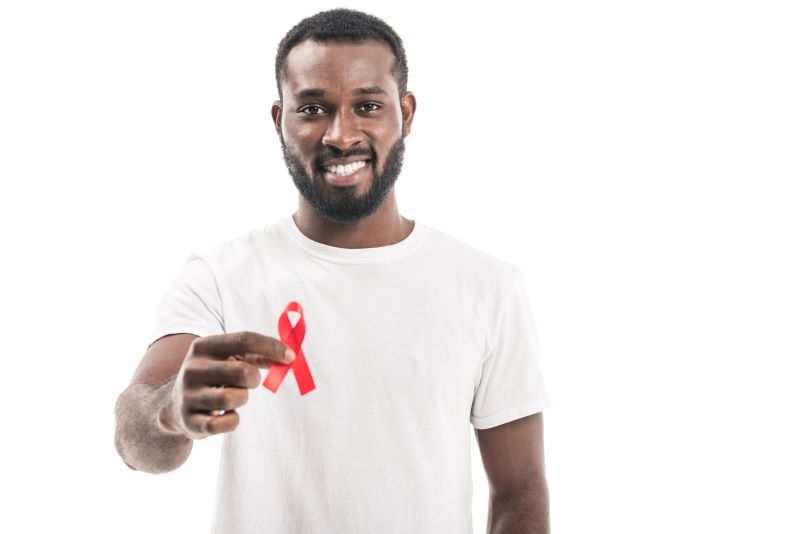
Human immunodeficiency virus (HIV) and acquired immunodeficiency syndrome (AIDS) have been a global health concern for decades, with misinformation and myths often contributing to the stigma surrounding these conditions. Despite extensive efforts to educate the public, numerous myths persist. This article aims to debunk some of the most common misconceptions about HIV/AIDS, providing accurate information to promote understanding and reduce stigma.
Myth 1: HIV/AIDS Only Affects Certain Groups
One prevailing myth is that HIV/AIDS exclusively affects specific groups, such as the LGBTQ+ community or individuals engaging in certain sexual behaviors. In reality, anyone, regardless of sexual orientation, age, or lifestyle, can contract HIV. The virus is primarily transmitted through unprotected sexual intercourse, the sharing of needles (for example, during drug injection), and from an infected mother to her child during childbirth or breastfeeding. Understanding that HIV/AIDS can impact anyone is vital for fostering empathy and promoting universal awareness.
Myth 2: HIV Can Be Spread Through Casual Contact
Contrary to popular belief, HIV is not transmitted through casual contact. Simple gestures like hugging, kissing, shaking hands, or sharing utensils with an HIV-positive individual do not pose a risk of infection. Instead, HIV is primarily transmitted through specific bodily fluids, including blood, semen, vaginal fluids, and breast milk. Awareness of how the virus is spread helps dispel unfounded fears and contributes to a more informed and compassionate society.
Myth 3: HIV is a Death Sentence
With advancements in medical research and the development of antiretroviral therapy (ART), HIV is no longer the inevitable death sentence it was once perceived to be. While there is no cure for HIV, proper medical care can effectively manage the virus, allowing individuals with HIV to lead healthy and fulfilling lives. Early detection, access to healthcare, and adherence to treatment are important factors in managing the progression of HIV to AIDS.
Myth 4: You Can Tell if Someone has HIV/AIDS by Looking at Them
Judging a person’s HIV status based on appearance is both inaccurate and perpetuates harmful stereotypes. Individuals with HIV may look and feel perfectly healthy. Stigma associated with visual stereotypes can deter people from seeking testing, treatment, and support. It is important to recognize that HIV affects people from all walks of life and that assumptions based on appearance contribute to the discrimination faced by those living with the virus.
Myth 5: HIV/AIDS Can Be Cured by Alternative Therapies
Numerous alternative therapies and remedies claim to cure or eliminate HIV/AIDS. However, there is no scientific evidence to support these assertions. ART, which involves HIV medications that are prescribed and monitored by healthcare professionals, remains the most effective method of managing HIV. Relying on unproven treatments can be dangerous because it may delay individuals from seeking proper medical care and could exacerbate their condition.
Conclusion
Debunking common myths about HIV/AIDS can help people gain an accurate understanding of these conditions, reduce the stigma surrounding them, and promote empathy. It is essential for individuals to be well-informed about the transmission, treatment, and daily realities of living with HIV/AIDS. By challenging misconceptions and promoting evidence-based knowledge, society can work towards creating a more supportive and inclusive environment for those affected by HIV/AIDS.
For more information on this topic, please read these publications from the ISSM Journals: The Journal of Sexual Medicine, Sexual Medicine Reviews, and Sexual Medicine Open Access:
Erectile Dysfunction Is Not a Mirror of Endothelial Dysfunction in HIV-Infected Patients
Poppers use and HIV infection—a literature review
References:
Centers for Disease Control and Prevention. (2021). HIV Basics. https://www.cdc.gov/hiv/about/index.html
UNAIDS. (2021). Global AIDS Update 2021. https://www.unaids.org/sites/default/files/media_asset/2021-global-aids-update_en.pdf
You may also be interested in...
Other Popular Articles

What Is the Average Penis Size?
If you have ever wondered how your penis compares to others in terms of size, you are not alone. Many men are curious to know how their penises stack up compared to the average. Unfortunately, general curiosity can sometimes give way to full-on obsession and anxiety about penis size. This can be an unhealthy and often unnecessary fixation, especially because most men who think their penises are too small have perfectly normal-sized penises.

What Is Jelqing, and Does It Actually Work?
The term “jelqing” refers to a set of penis stretching exercises that some believe can make the penis bigger. Although the practice has gained attention and popularity in blogs and internet forums in recent years, there is no scientific evidence that it is an effective way to permanently increase the size of one’s penis. In fact, in some cases, jelqing may actually cause damage to the penis, so it is a good idea to get all the facts before setting off to try it.

What Is Sensate Focus and How Does It Work?
Sensate focus is a technique used to improve intimacy and communication between partners around sex, reduce sexual performance anxiety, and shift away from ingrained, goal-oriented sexual patterns that may not be serving a couple.

Can Sex Reduce Menstrual Cramps?
The SMSNA periodically receives and publishes ‘guest editorials.’ The current article was submitted by Mia Barnes, a freelance writer and researcher who specializes in women's health, wellness, and healthy living. She is the Founder and Editor-in-Chief of Body+Mind Magazine.
Having sex while you experience menstrual cramps is healthy and can provide significant benefits. While it might not be the first activity that comes to mind when your PMS or period cramping begins, many people enjoy sex to reduce menstrual cramps, experience increased pleasure and benefit from other advantages. Learn more about having sex while menstrual cramps are happening and how it can help your body.

How Long Does It Take the Average Man to Ejaculate?
On average, it takes a man between 5 to 7 minutes to orgasm and ejaculate during sexual intercourse.

The Effect of Regular Aerobic Exercise on Erectile Function
Erectile dysfunction (ED) is the inability to achieve or maintain an erection sufficient for satisfactory sexual activity. As men get older, their erectile functioning may naturally decline due to changes in testosterone levels, cardiovascular functioning, and the potential development of other chronic medical conditions that become more common with age.
You are prohibited from using or uploading content you accessed through this website into external applications, bots, software, or websites, including those using artificial intelligence technologies and infrastructure, including deep learning, machine learning and large language models and generative AI.

